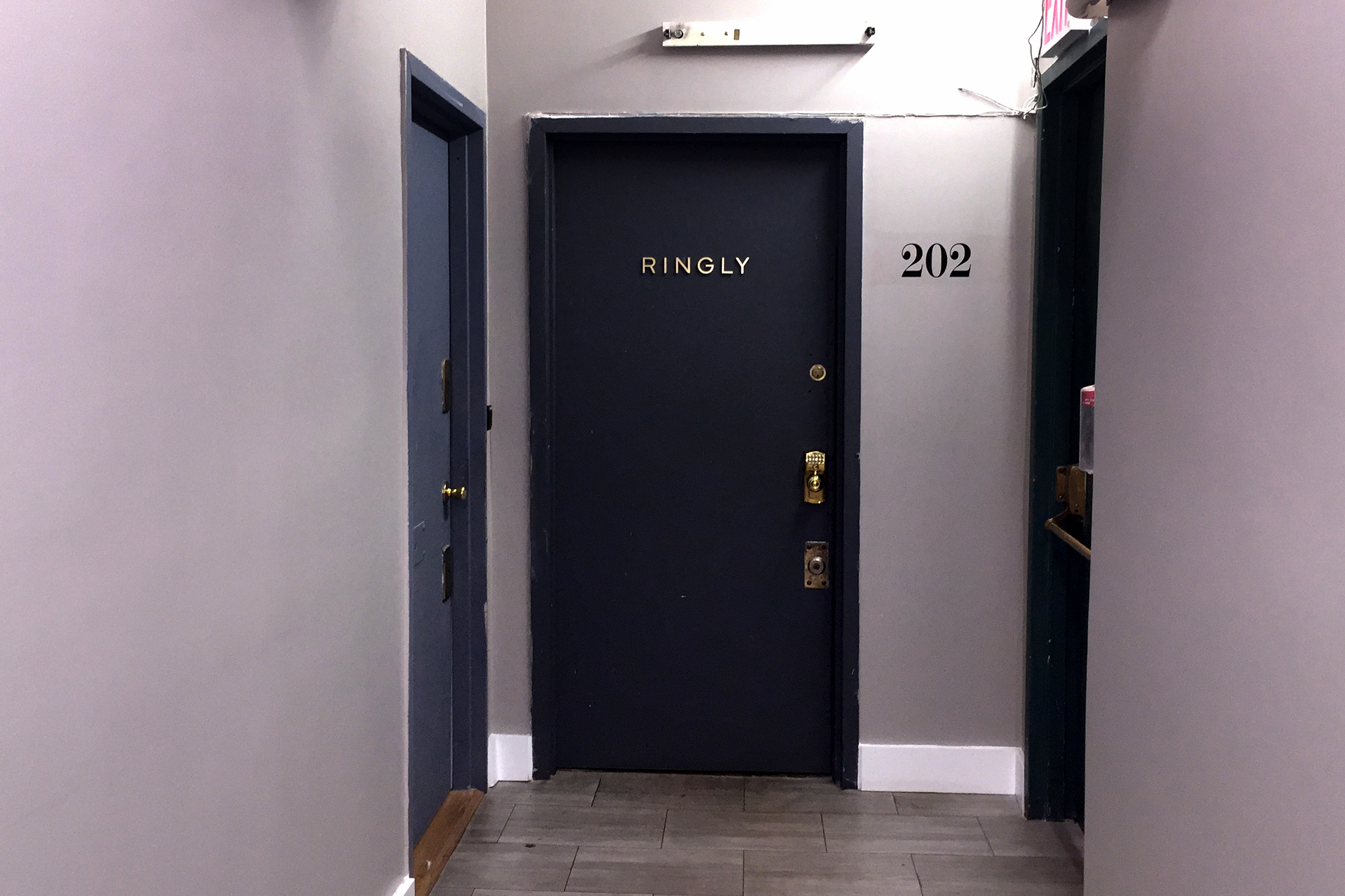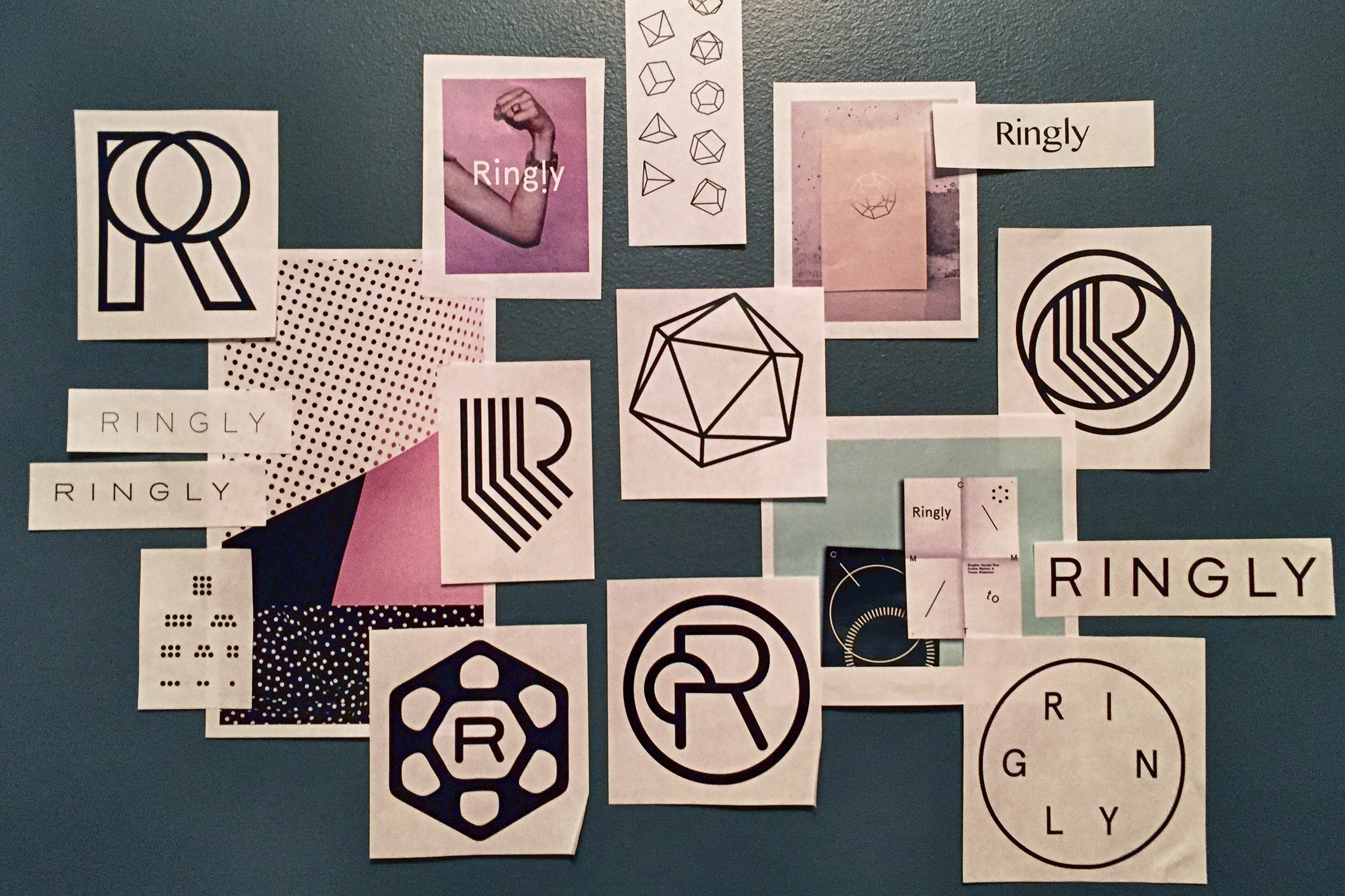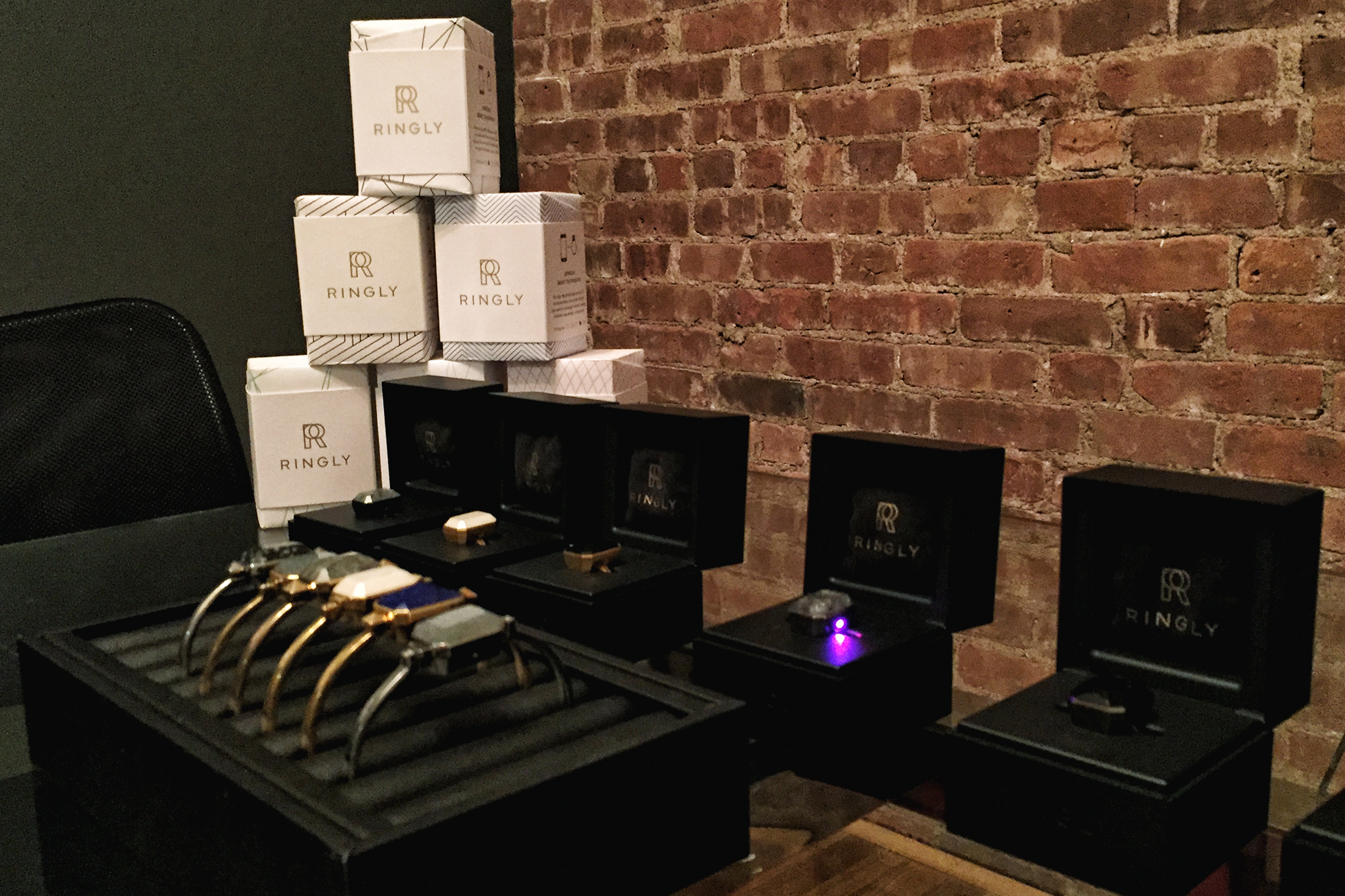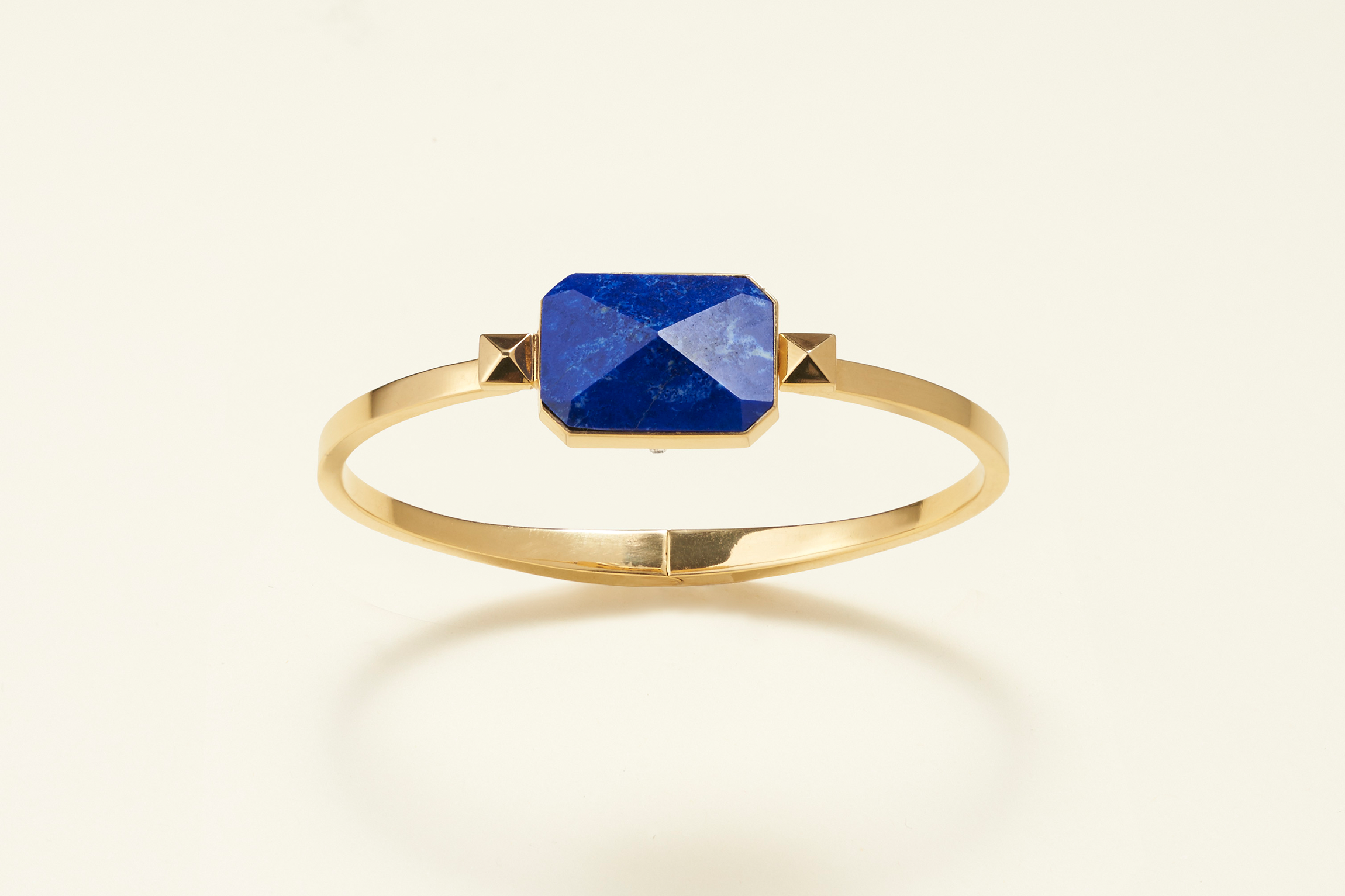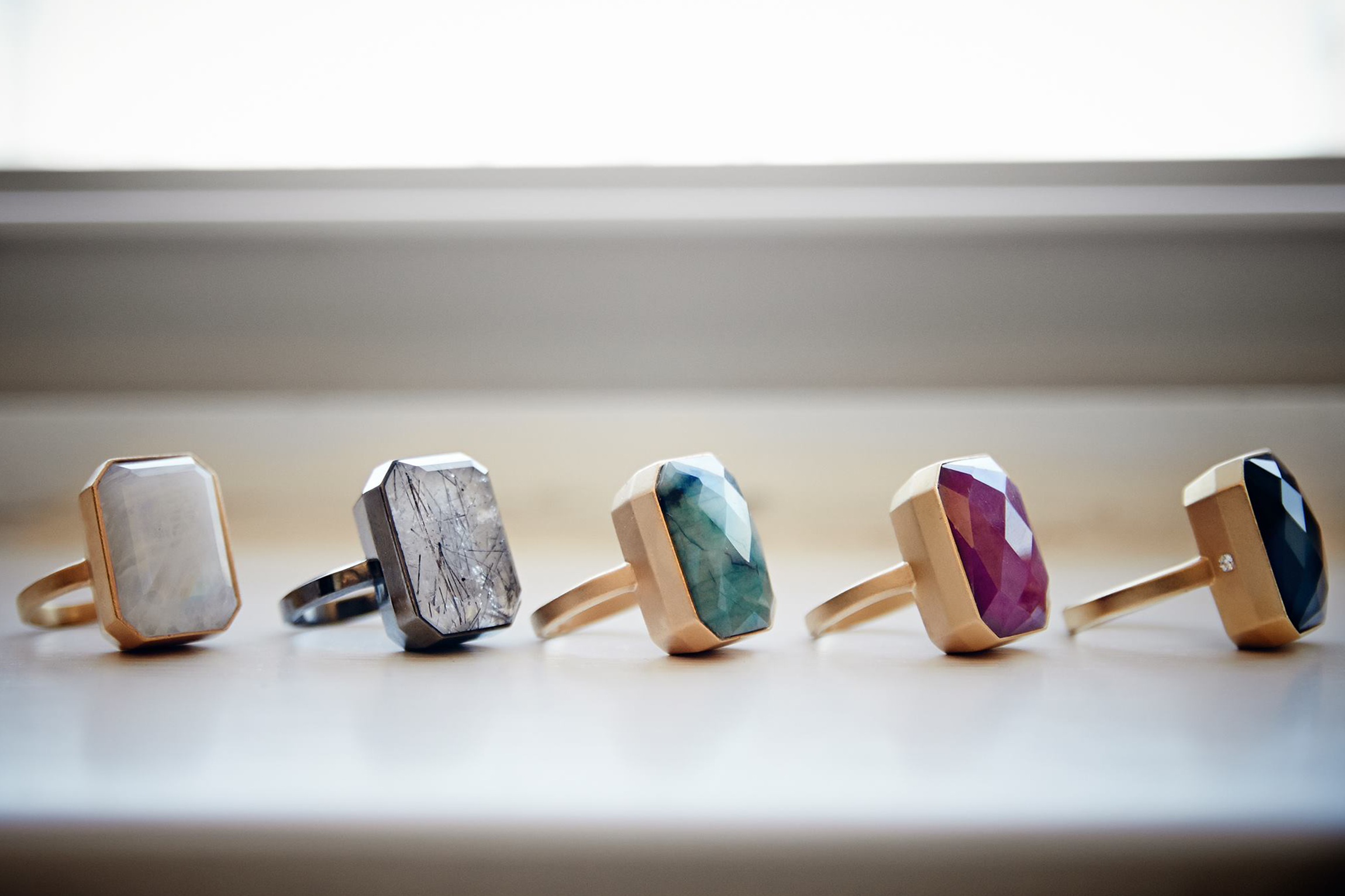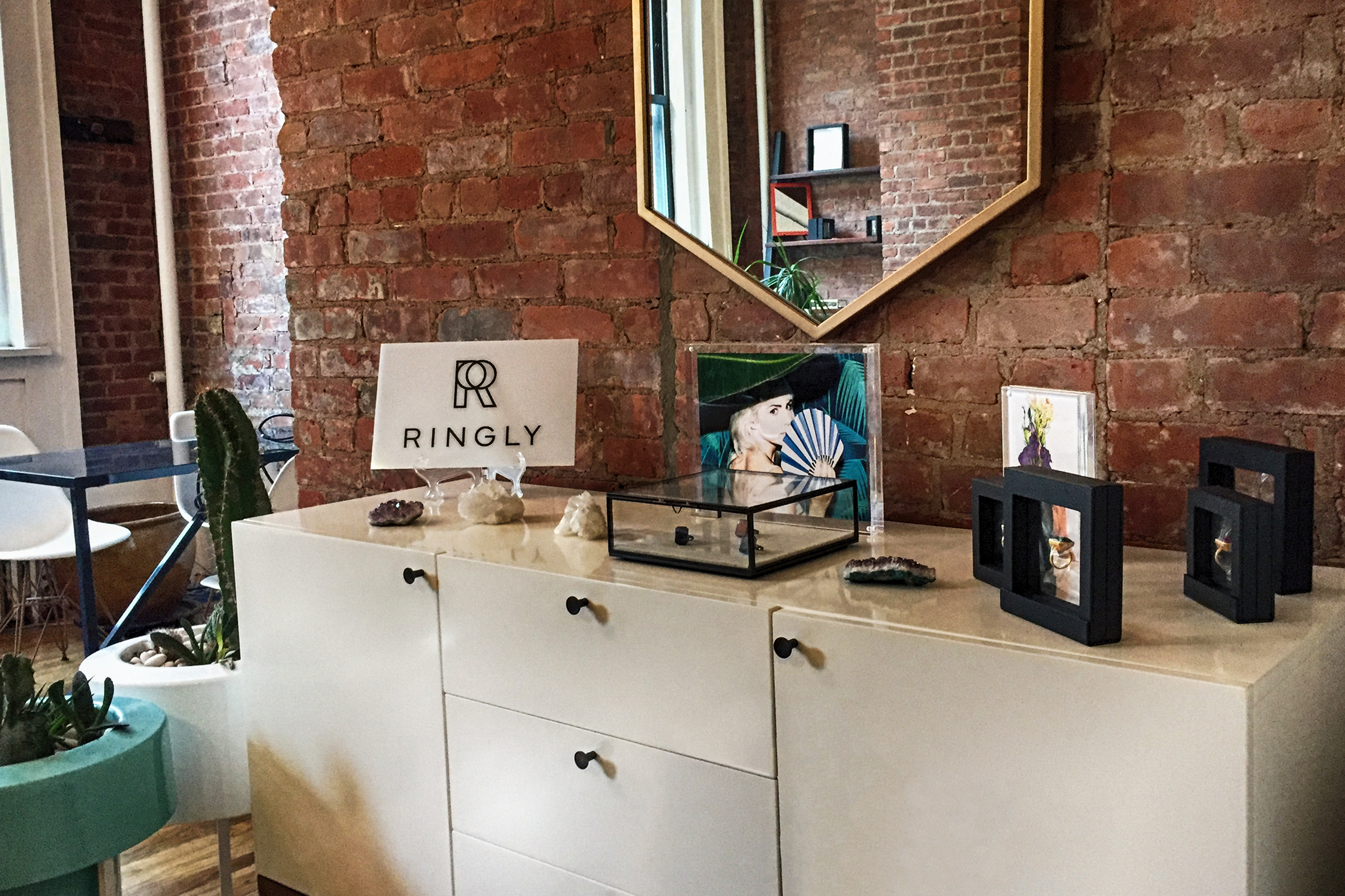Ringly Dominates by Thinking Like a Customer
By Tricina Elliker
Welcome to the fourth edition of AppMagic — if you haven’t already, be sure to take a peek at our other articles in the series. This month we sat down with the engineers at Ringly, the smart jewelry company that’s turning wearables upside down with a design-forward, customer-first approach.
Rapid innovation in personal tech has gained an incredible amount of momentum in recent years, with dozens of new wearables hitting the market every year. But most of these devices are primarily fitness trackers or small versions of smartphones. The folks at Ringly, however, are doing something very different with their product. From the design to the features to their office layout — customer experience is the driving force behind every decision at Ringly.
Tech that frees consumers from their tech
Ringly’s CEO, Christina Mercando d’Avignon, founded the company with the express purpose of helping people get some space from their tech. D’Avignon kept encountering an issue we can all relate to: She would put her phone down, determined to spend a little time in the real world, interacting with real people. But in order to avoid constantly checking to see if she had new notifications, she had to put the phone out of sight, in a bag, in a drawer, anywhere to discourage that constant connection. When she did that, though, she was likely to miss important calls and messages.
D’Avignon realized that she needed to build a high-tech solution that helped people get away from their technology without being completely unreachable. Think about it: You’re out to dinner with a group but waiting on an important email. You see that little light on your phone flash, signifying…something. You often don’t know if that light means you missed an important call, finally got that email, or just received a promotional offer from Uber. So you check your phone only to find the notification wasn’t the email you’ve been waiting for. You put your phone down until the light flashes again four minutes later. Meanwhile, the other people at your table are getting more and more annoyed at you.
Because D’Avignon’s background is in product development, she was in the perfect position to create the right solution. She decided to make elegant jewelry that could subtly communicate with its user. By using a small light on the side that can flash five different colors and a built-in vibration system with four different patterns, each Ringly can convey 20 different notifications.
User feedback has been hugely positive. Ringly customers are finding all sorts of uses for the device.
“One scenario that happens again and again is a mom in a meeting who wants to know if their child’s school calls,” says Akbar Dhanaliwala, Ringly’s Director Of Product Engineering. “In the Ringly app, you can set not just what apps notify you, you can also choose contacts.”
Doctors and other on-call staff members have also found Ringly’s high customization useful. They can go about their day or night off without worrying they’ll miss that critical call just because they’re watching a movie or running a hair dryer. As long as the phone is in range — Ringly has an easy way for users to check — they know the important information will get to them without the need to slog through all their notifications.
Designing features from real user experience
When it comes to features, Ringly has been extremely cautious not to inundate customers with bells and whistles they don’t want or need.
This is an issue Peter Coles, Ringly’s VP of software engineering, knows all too well. They take a different approach at Ringly, he says. “Everyone is always thinking about: What is the product experience? Building something simple that works well is actually very difficult and requires a lot of integration and thoughtfulness. It’s much harder to build something simple and elegant than to just to kind of throw a bunch of features in there and let users sort it out.”
The Ringly team is always focused on the user experience of their product, parsing out which features would help their customers get the most out of the device and which would just get in their way.
That’s a hard balance to strike, and the minimalistic approach is a new one for the tech sector. Whenever a new product comes out, the first thing everyone wants to know is what features it has. But this approach makes it too easy for companies to get carried away with adding features, cramming as many uses as possible into a product until it’s bloated and too frustrating for their customers to actually use. Ringly has been very careful to keep a close eye on what the jewelry is used for out in the real world.
Case in point? The charger. Instead of slapping a garish charging port to the side of their products, Ringly uses discrete charging pins that allow the jewelry to be recharged by simply sitting in the stylish ring or bracelet box that came with the product. They’ve worked backwards from customer behavior and preferences. They knew that customers would want this piece of jewelry to act like jewelry, rather than like a phone or laptop, so they built the charger that wouldn’t be out of place on a vanity table or a jewelry organizer.
Customer communication and user testing is everything
In order to make such a new product integrate so seamlessly into the lives of their customers, the Ringly team say they keep an open line of communication at all times. Knowing what customers want and how they use a product requires a lot of listening. The Ringly crew has built in several ways to keep customer feedback top of mind for the whole team.
First, there’s an internal Slack channel where customer feedback gets added. This way every employee is always able to see how users are experiencing the products. They’ve also discovered, like so many other companies, keeping the departments together (literally) creates better customer feedback integration. The customer experience team is physically next to the rest of the team, so everyone is aware of what’s going on with customers.
“We all sit in the same room,” Dhanaliwala says. That’s another important thing; we’re there where the conversation with customers is going on. So if someone is having an issue, we will all be looking into it — not just the customer service team, but whoever is working on that part of the app or the firmware or whatever part of the device is having the issue.”
Actively seeking customer opinions on every aspect of the product is important. Even though, Ringly does lots of testing themselves, they recognize that they don’t always represent all their customers in every aspect of taste or lifestyle. “Our team in New York might favor different gemstones and precious metals than, say, my family in Houston would. ” says Heidi Farrell, a mechanical engineer at Ringly. “We offer our rings in 18k gold and gunmetal plated styles, but we’ve been hearing from customers who love silver, so we were excited to recently announce a polished stainless steel style for the Aries bracelet—it’s important to look outside yourself when designing for others.”
User testing is another important piece for Ringly. Every product goes through rigorous testing, and everyone at Ringly helps out. “Even the Roomba!” Dhanaliwala adds. Coles chuckles at this. “Yeah,” he says. “We have a Roomba, and we’ve rigged it up, so we’ll put a ring on it at night and it will go around the office.” The next morning the team can look over what happened. It’s just one more way to test range, signal strength, and other features in a way that mimics a person’s random movements.
Testing aspects of life with a Ringly product is important to the team. “I have worked at lots of companies of that prototype,” Farrell says. “But these are definitely the most fun prototypes to wear around as you are getting the hang of them.” Farrell was even wearing an old prototype of the bracelet during the interview.
As a mechanical engineer, she spends a lot of her time ensuring the physical experience of using the product is perfect. “You start talking through all the different options so you’re thinking about the experience of putting the bracelet on and taking it off. Should it clip together?” These details, while small, are important. If they build a bracelet that works well but users don’t enjoy wearing because, say, the clasp occasionally pinches the skin on the wrist, then how well it syncs with your phone is completely irrelevant.
A wearable customers actually want to look at
The fact that Farrell could even wear a prototype without anyone noticing that it was wearable tech (and not just a piece of jewelry) is exactly what pushes Ringly out into a category all their own. While wearables have gained a foothold, they’ve skipped over a large potential customer base that doesn’t particularly like the clunky, plastic look or bulky digital screens of most wearables — many of which call to mind those calculator watches from the 80s. If wearables are meant to be worn all the time, they should blend in with your everyday style.
Ringly’s products look like fine jewelry. Because they are. From the beginning, D’Avignon has insisted that every Ringly product must be jewelry first and foremost. It has to be attractive enough that customers would buy it without the “smart” element.
“A lot of our competitors, they come at it from a tech-first point of view,” Dhanaliwala says. “Like, ‘these are the features we want to have.’ And then once they have all the features they want, they tell the designers to make it look like jewelry.”
Ringly has reversed that approach, focusing on the design first. It’s a bold move considering one of the biggest issues in wearables is getting the tech small enough. One of the reasons that so many companies probably focus on the tech and push design off until the end is that this kind of minuscule tech is just barely possible as is — forget constraining it within a specific design or working with precious stones.
“Christina has always liked small jewelry,” Dhanaliwala says. “So it’s always: How do we make it smaller, smaller, smaller? We are already using the smallest battery, the smallest Bluetooth chip on the market. We are already at the limits of what is commercially available. So we are almost to the point of asking whether we need to start actually developing our own batteries. Do we have to work with chip manufactures and develop a chip together? We are continually trying to get even smaller. Because the smaller the hardware is; the more room the jewelry designer has.”
And that extra bit of room is important in a product where every millimeter counts. Because Ringly uses real stones which are all unique in density, shape, and size, there’s a considerable manufacturing challenge too. Ringly was born out of the premise that wearables can be beautiful. Because of that, the company only uses hand-cut, all natural semi-precious gemstones, which are notoriously tough to get exact cuts from. “We get expert craftsmen, who do this all day long and know exactly how to cut the stone within a fraction of a millimeter to the right overall size and faceting,” says Farrell. “It’s amazing.”
“That’s not a thing that stone cutters generally do.” Dhanaliwala adds. “But we need to have very precise assembly because the tech inside has to be precisely aligned. We’re kind of bringing together these two different industries — jewelry and electronics. They have completely different supply chains and ways of doing business. It’s like herding cats getting these two industries to work together.”
That’s putting it lightly. Not only is Ringly bringing together two very different, very separate industries with fundamentally divergent processes, they’re also creating a global company. The electronics manufacturers in China have to work with the stone cutting experts in India, all while the technology is developed at their main office in New York.
The future of wearable tech
As a leader, at the forefront of the wearable space, Ringly is a company to watch. The products already support a startling 127 different apps — from the expected, like Facebook and WhatsApp, to the very specialized like Etsy, New York Times, and Airbnb. But they’re not done there. The engineers at Ringly have built enough into the hardware that they’re able to offer firmware updates to give users new features — that is, when they find features that will really improve user experience.
And Ringly’s upcoming release of bracelets with fitness tracker will be a game-changer. Akbar says, “The main difference will be instead of having to wear a tech-y looking strap on your wrist, you’ll be able to wear a beautiful piece of jewelry.” Ringly customers, your prayers have been answered.
Just the fact that they’ve built in plenty of tech extras speaks to the fact that Ringly is taking the long view. They know that their customers’ needs may change and grow over time. And Ringly wants to be able to accommodate without forcing customers to buy a new product every year.
This forward thinking, yet cautious, approach to design and customer experience has garnered them much deserved praise from blogs like Gizmodo and Buzzfeed. So now that they’ve successfully tackled the ring and the bracelet, where is the company headed next? Dhanaliwala says they’re exploring a number of different possibilities for future products, but for now are concentrating on the ring and bracelet market.
We’d like to extend a big thank-you to the whole Ringly team, but especially to Akbar Dhanaliwala, Heidi Farrell, and Peter Coles who set aside time out of their busy schedules to come speak with us. Take a minute to look through the Ringly shop — it’s a gorgeous collection.




